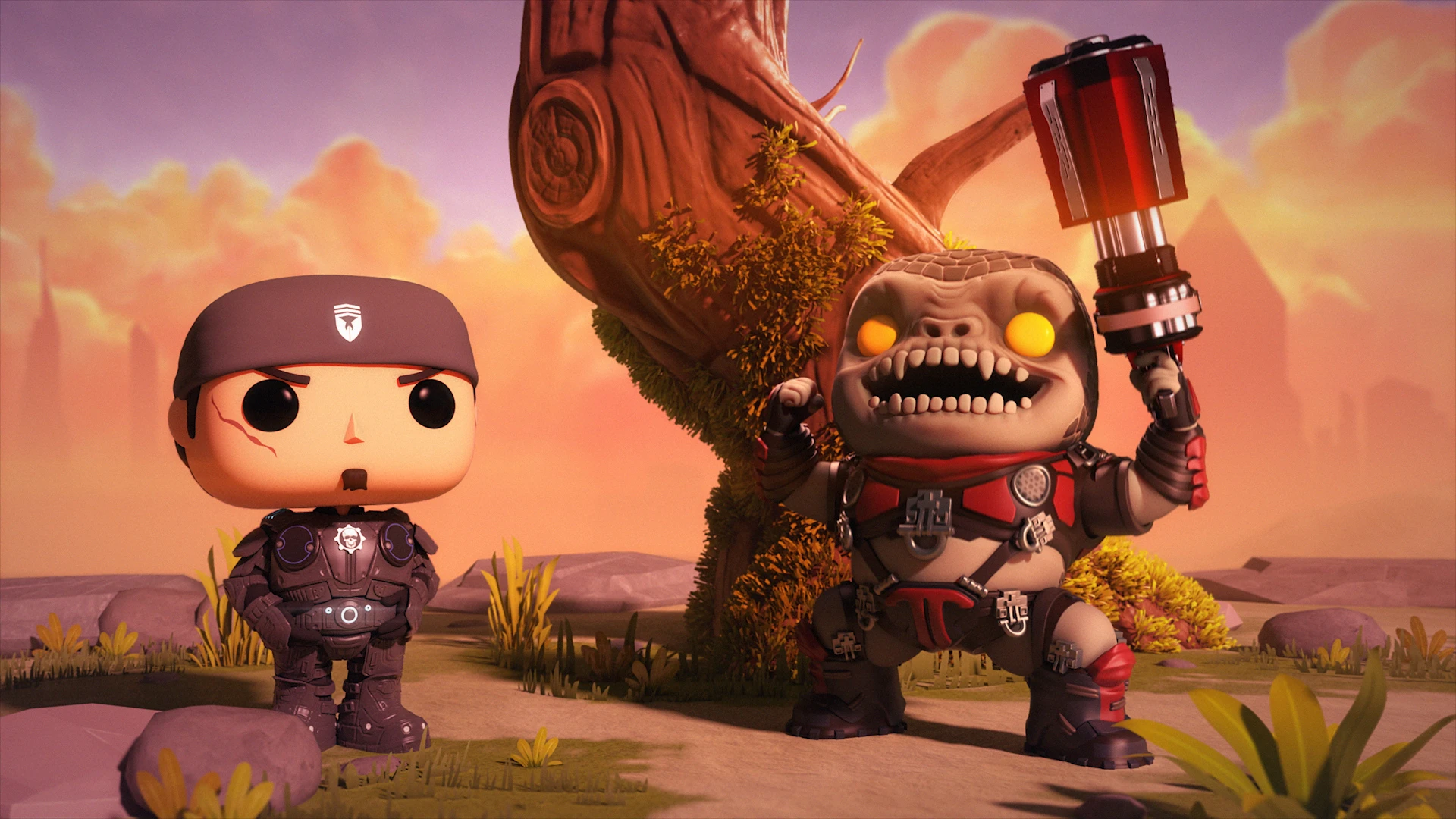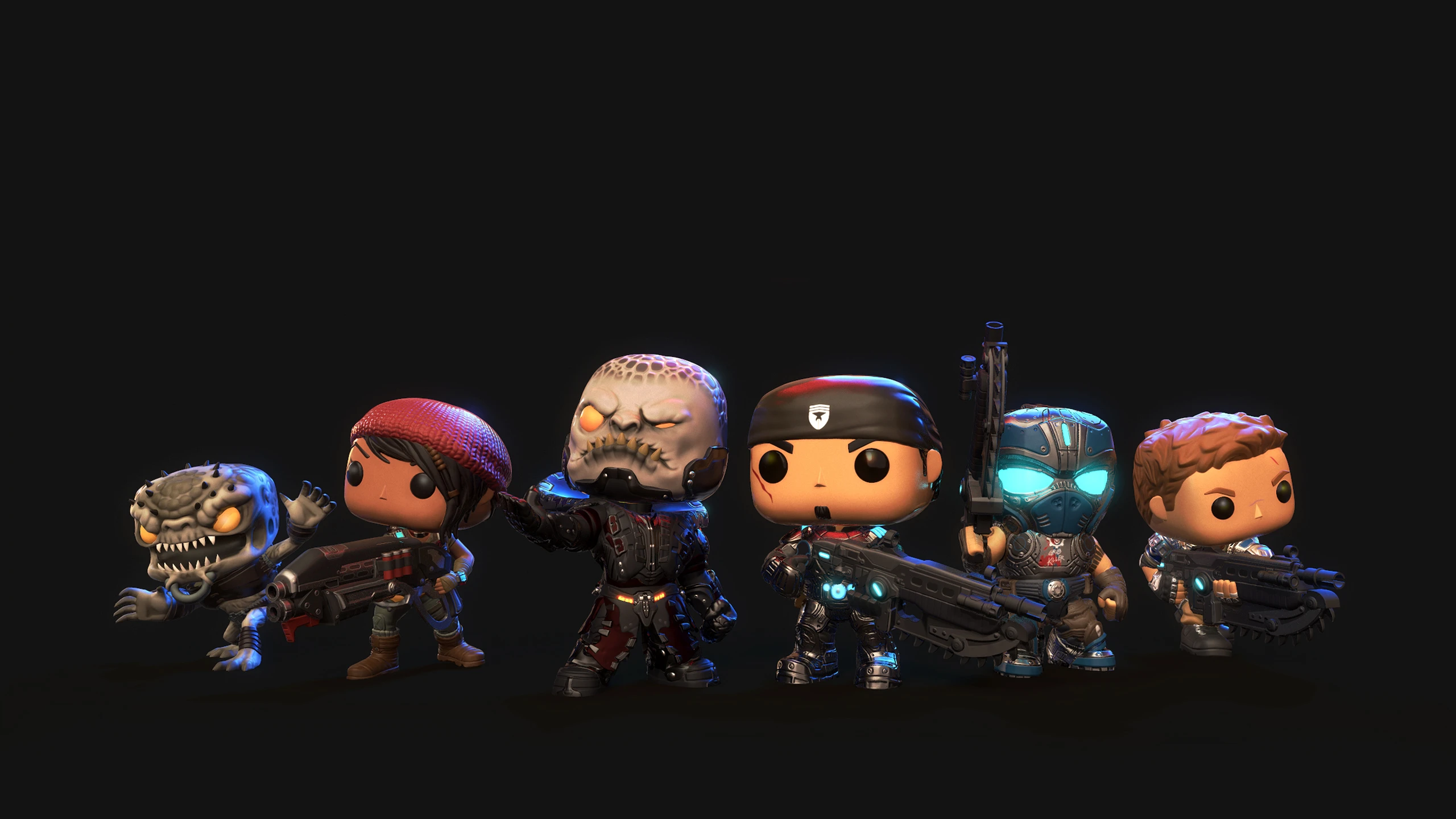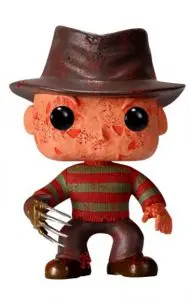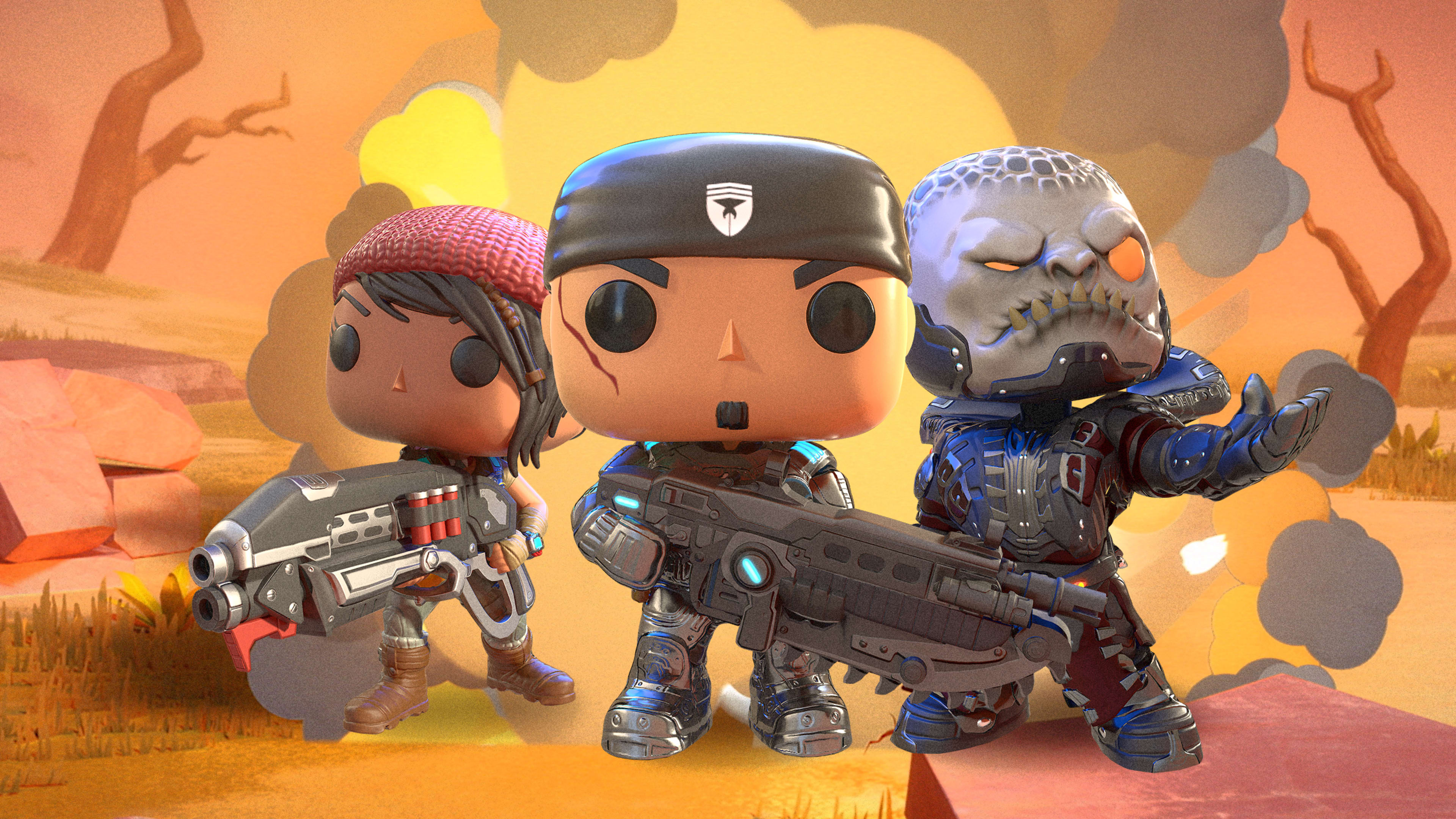Microsoft’s Gears of War is amongst the most over-the-top goriest video game franchises in history. As a soldier fighting endless hordes of monsters, your primary weapon is literally an assault rifle wrapped in a serrated chainsaw. At close range, you slice through skin, sinew, and bone as blood fountains out from the clavicle of subterranean ogres.

Gears of War has been an anchor of Microsoft’s Xbox lineup since 2006, but it is also a mature-rated game living in an increasingly PG-13 world. Rod Fergusson, head of the Microsoft-owned game studio Coalition, who develops the Gears of War brand, had been thinking about how Gears could grow and appeal to a more casual audience on platforms like mobile phones. How could it somehow feel more accessible, and less gory, but still like Gears?
That’s when he looked down to his desk at two Gears of War Funko Pop! figurines, the omnipresent bobble head collectibles that turn anything from Breaking Bad‘s Walter White to Halloween‘s Michael Myers into the joyful, visual equivalent of PBS cartoons. Over the past 21 years—but especially in the past decade—Funko has built a business that does $686 million a year in revenue by selling Pop! units at prices starting around $5. Funko can take any beloved entertainment IP and turn it into a cute and cuddly, family-friendly character. Staring at the Funko toys, Fergusson realized the answer was right in front of him. Microsoft should make a Gears of War game out of digital Funko. (That game, Gears Pop!, will come out August 22nd to iOS, Android, and Windows 10.)
There was just one twist: Typically, Funko pays partners like Microsoft to produce figurines for their corporate IP, like Halo‘s Master Chief. This time, for the first time, Microsoft is paying Funko to license the Pop! brand. It marks an important shift for Funko, in which the geeky toy company may operate more like Lego, the Danish toy company that made over $5 billion in revenue last year. Lego, after all, sells Lego Star Wars sets (licensed from Disney) but also movies and games led by Lego’s own bricks and minifigs. Funko is growing from licensee to a brand with entertainment value that’s all its own.
Collectibles are a $200 billion market on their own, and video games are on pace to be a $300 billion industry by 2025. And Funko sits right in the middle of it all.

The rise of Pop!
The Pop! brand itself is only 10 years old, but it’s become a cornerstone of geek ephemera as Comic-Con has become a major force in mainstream culture. For Funko, it’s all about specificity. The company actively licenses 1,100 distinct brands and characters today. “You might never have watched a show on Netflix, but if you’re a Liverpool soccer fan, we’ve [still] got something for you,” says Funko’s CEO Brian Mariotti.
Mariotti explains that Funko’s aesthetic is inspired largely by collector culture in Japan, which has an endless appetite for figurines of all sorts—many of which are simply adorable in a look dubbed kawaii. The aesthetic of a Funko Pop! is innocent by nature, with wide-spaced eyes that are hallmarks for innocent characters from E.T. to Hello Kitty. The first Funko was the rosy-cheeked American icon Big Boy.
“Aesthetically, we came up with something that feels very stylized, whimsical, Asian influenced,” says Mariotti. “But I think the result of it was that people that had never thought about buying a [highly realistic] Daenerys Game of Thrones action figure, with 14 points of articulation, will buy a Pop!.”

Funko does this successfully, again and again, by very carefully assigning the right projects to the right designers. The company has about 800 employees worldwide, 150 of whom are artists creating new Pop! figures and other products. And when deciding who works on some obscure anime show, Funko asks who wants to work on that obscure anime show. Who likes it? “We always say ‘designed by fans for fans,'” explains Mariotti.
It’s a catchy marketing line, but it also makes practical sense. For a collector to notice a small detail in a Funko Pop! is like a tacit wink, an acknowledgement of a shared experience with a show or movie. And that momentary validation is an enticing sensation to spend money on to keep forever.
Putting Pop! into a game
Funko is very good at what it does; its revenue and fanbase is proof of that. But when Microsoft reached out about a video game collaboration, there were all sorts of new questions on Funko and Microsoft’s part because Funko wasn’t just an aesthetic anymore; it had to be interactive for the first time. And interactive is tricky. It forces designers to decide, how does a Funko walk? How does a Funko fight? Can a Funko bleed? (No, by the way, they can’t).

Funko’s own animation department had already discovered practical problems in two-minute promotional shorts the company had produced in the past, too. If you just import a Funko Pop! model into an animation program, its head is so big that it can’t reach to hold hands with another Funko Pop! And of course, there was the elephant in the room that Microsoft and Funko had to figure out: “How do you make a mainstream property that [involves] chainsawing monsters in half,” says Fergusson. “Because if you take the chainsawing monsters in half out of the game, you lose what made it popular in the first place.”
Working together, Funko taught Microsoft how to deconstruct some of its magic into what game developers dubbed “adorable badassery.” Then Microsoft took the lead on interaction, game mechanics, and filling out new figures for the game. “It was interesting to see. Initially, there was lots of feedback,” says Fergusson. “We got better and better at being able to understand the Funko style and process. It became more approvals as opposed to critiques.”
[Image: courtesy Microsoft]The team at Coalition worked out body and head ratios and realized it had to reposition the camera because heads were actually blocking the proper view of the game. It worked out how Pops could be chainsawed, too. “Instead of cutting through the Funko, it vibrates it and the head pops off,” says lead designer Tyler Bielman. “It’s a way to do what we do without making it destructive to a Funko.” When the head pops off, it’s not as if the toy has died. Instead, the head flies out to become a pin that might be redeployed onto the level later, like a piece on a gameboard.
Through the process of turning its brand into a Funko design, the Gears team learned that the franchise didn’t need to be grounded in gore. Funko’s soft-hearted aesthetic, already beloved by fans, gave Microsoft the confidence to sweeten one of the most gruesome games on the market to reach more people. Fergusson readily credits Funko with helping his studio mature their thinking about the Gears global brand. It doesn’t need to be bloody; it can be simply be over-the-top. What Funko learned from the Gears team was just how far a Pop! could be pushed and still be a Pop!. This Gears partnership is certain to inspire future projects from Funko that don’t need to rely upon the IP of other companies to be successful.
[Image: courtesy Microsoft]
“We have an animation studio, but what [Microsoft has] done is next level,” says Mariotti. “More than anything else, this is going to be the first exercise in storytelling but through a mobile platform. That will connect people into . . . god, you could do a movie with Pops!.” And I’m betting that someone will.
Recognize your brand’s excellence by applying to this year’s Brands That Matter Awards before the early-rate deadline, May 3.
